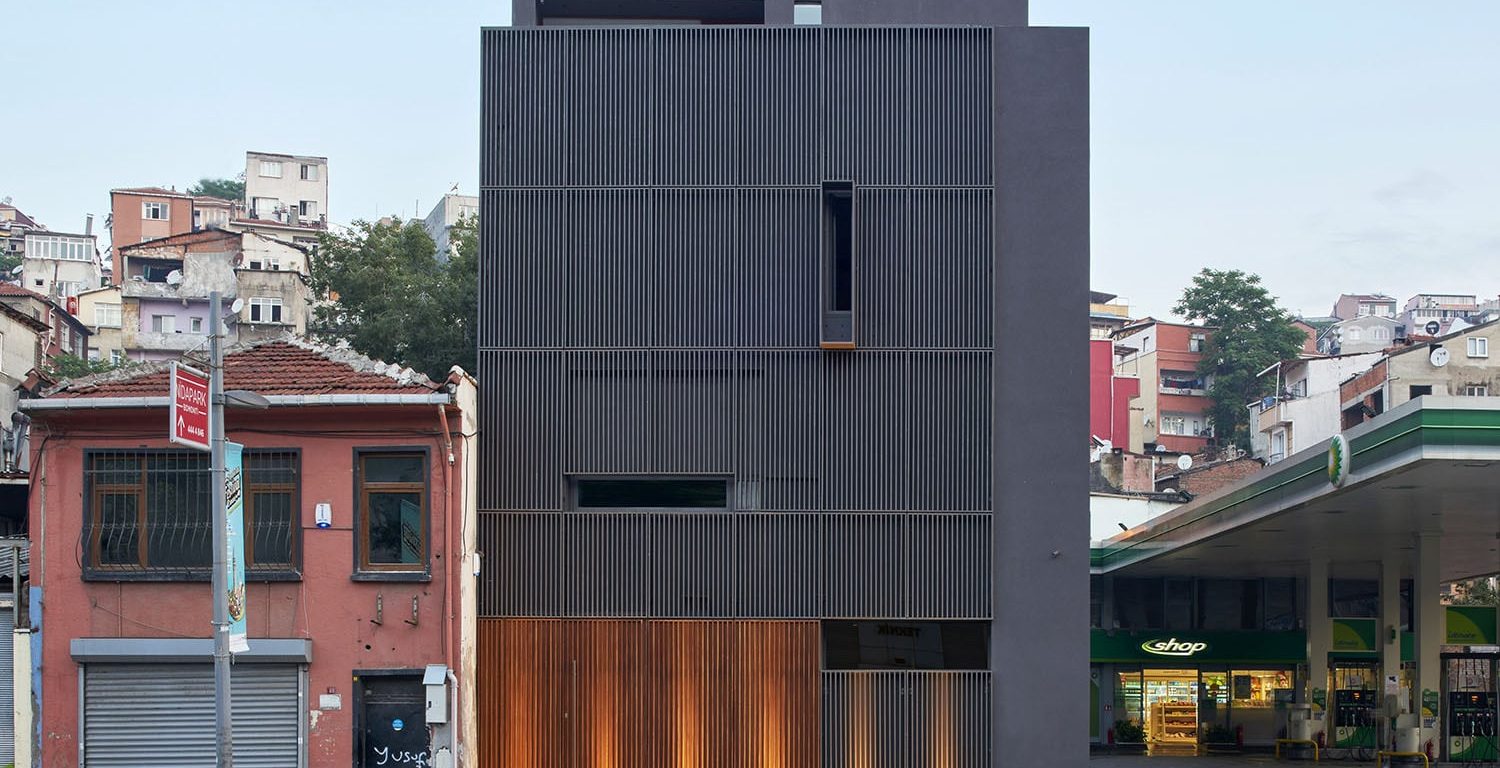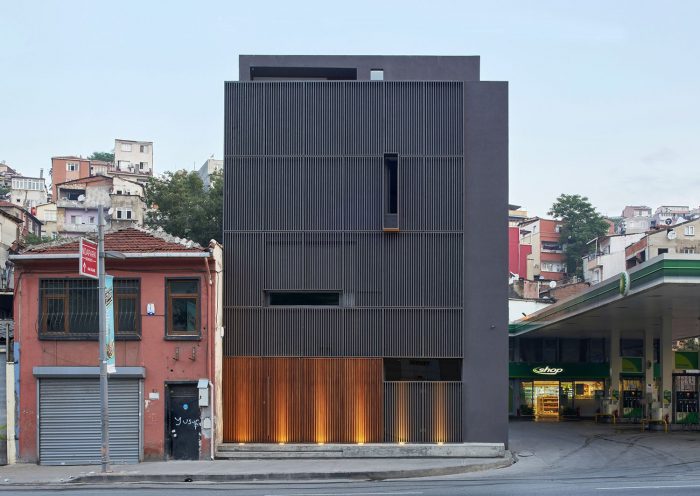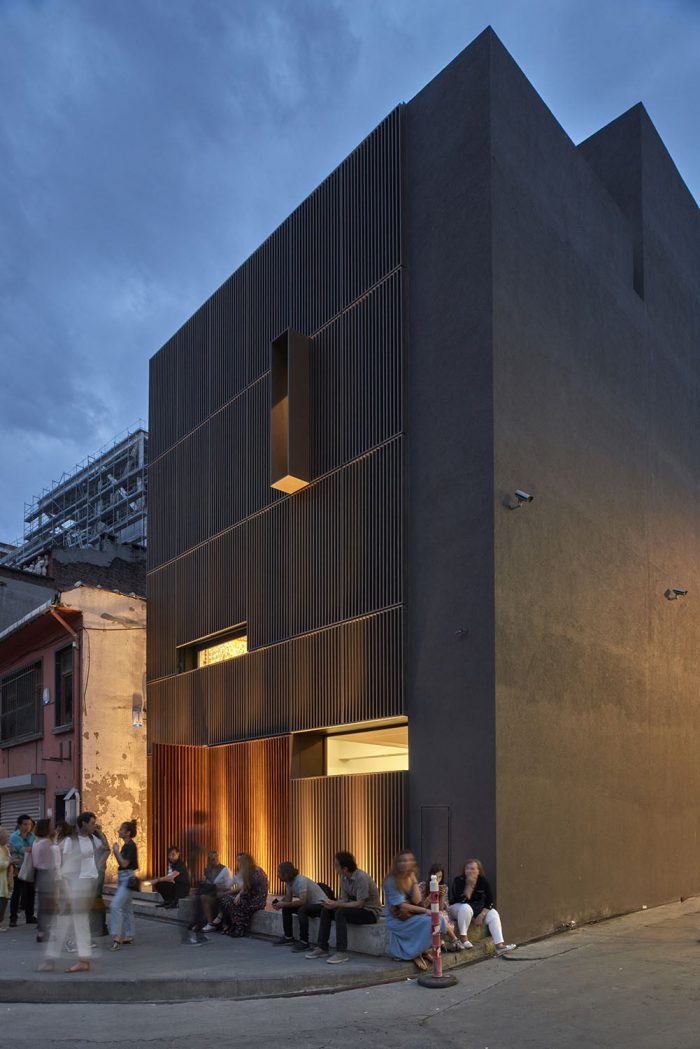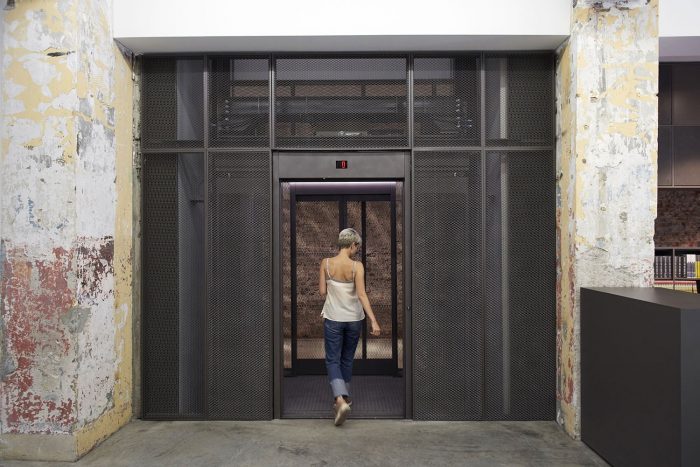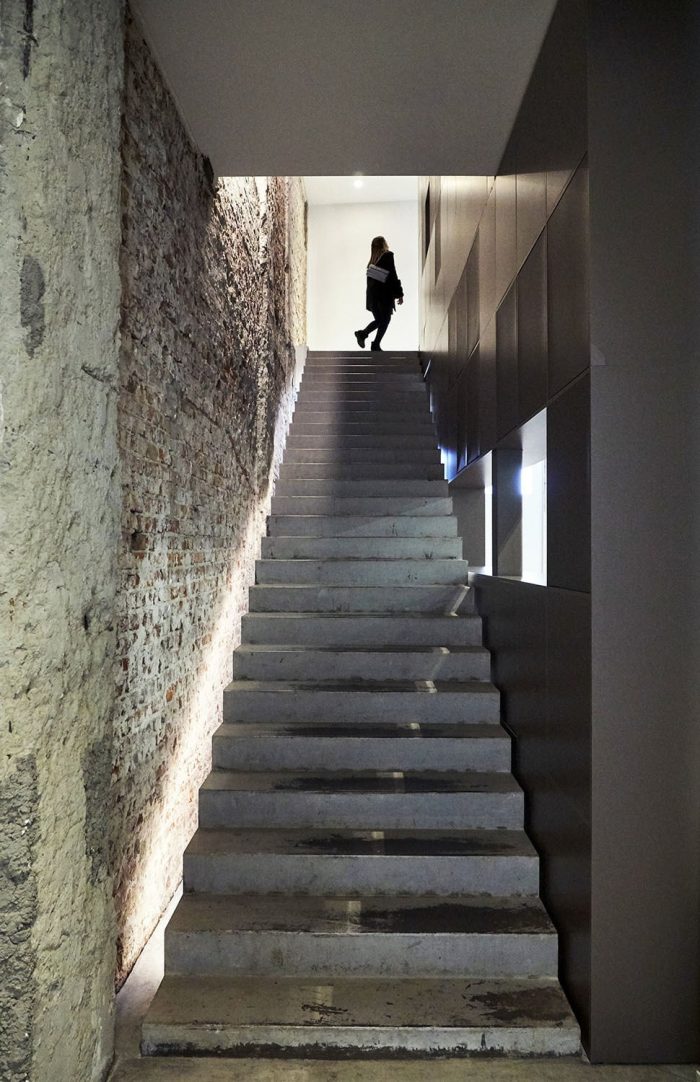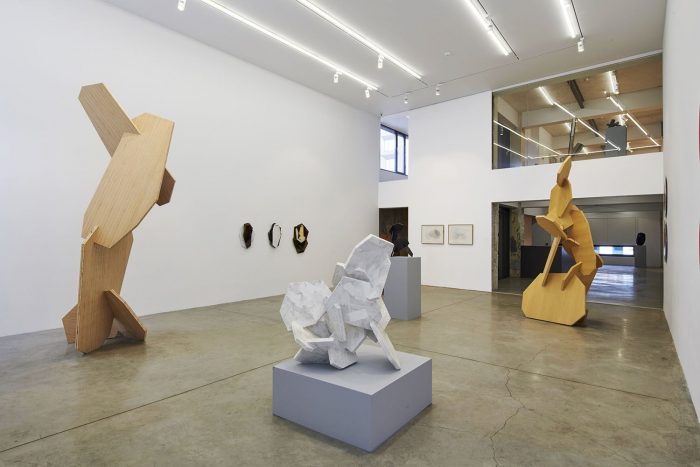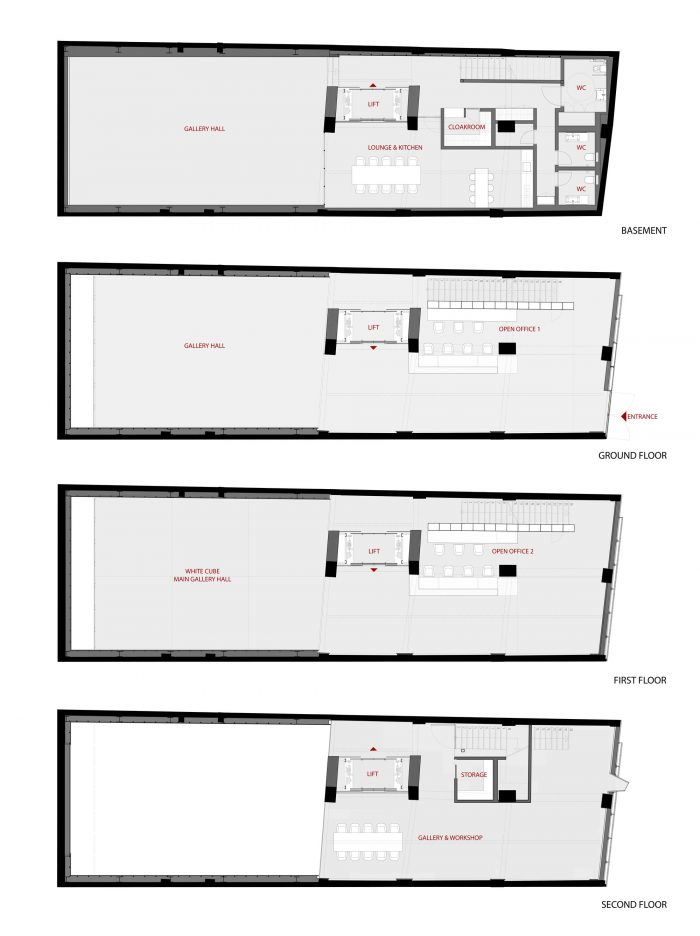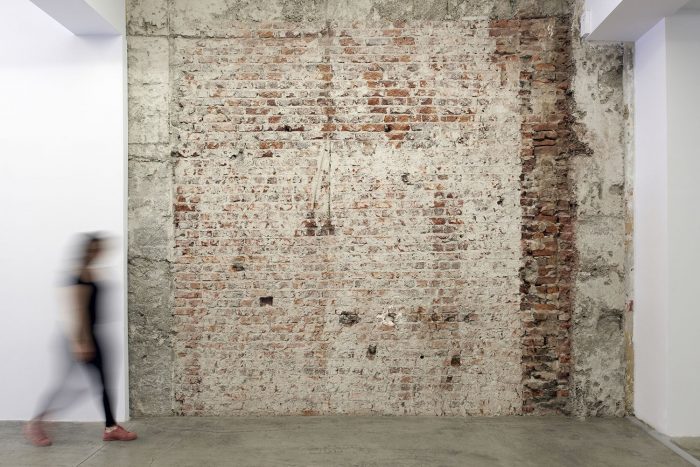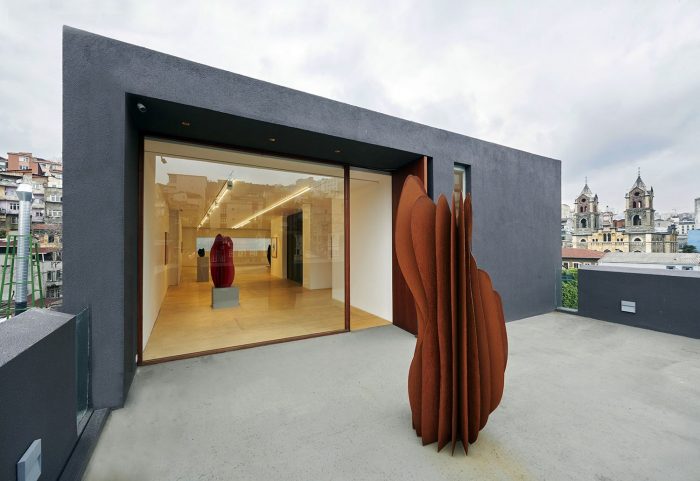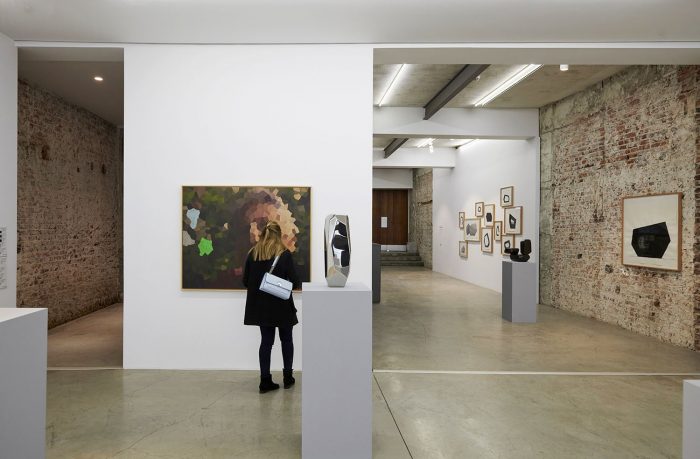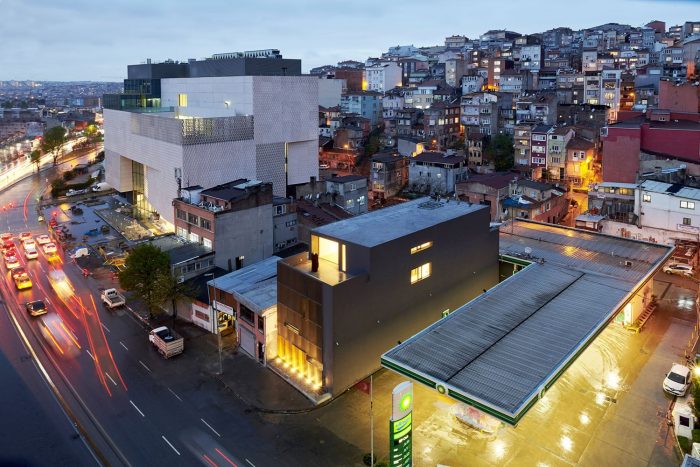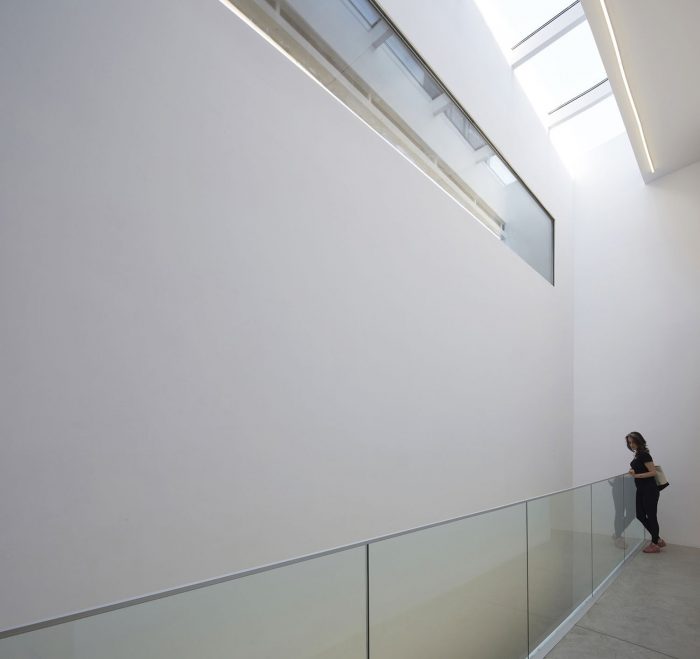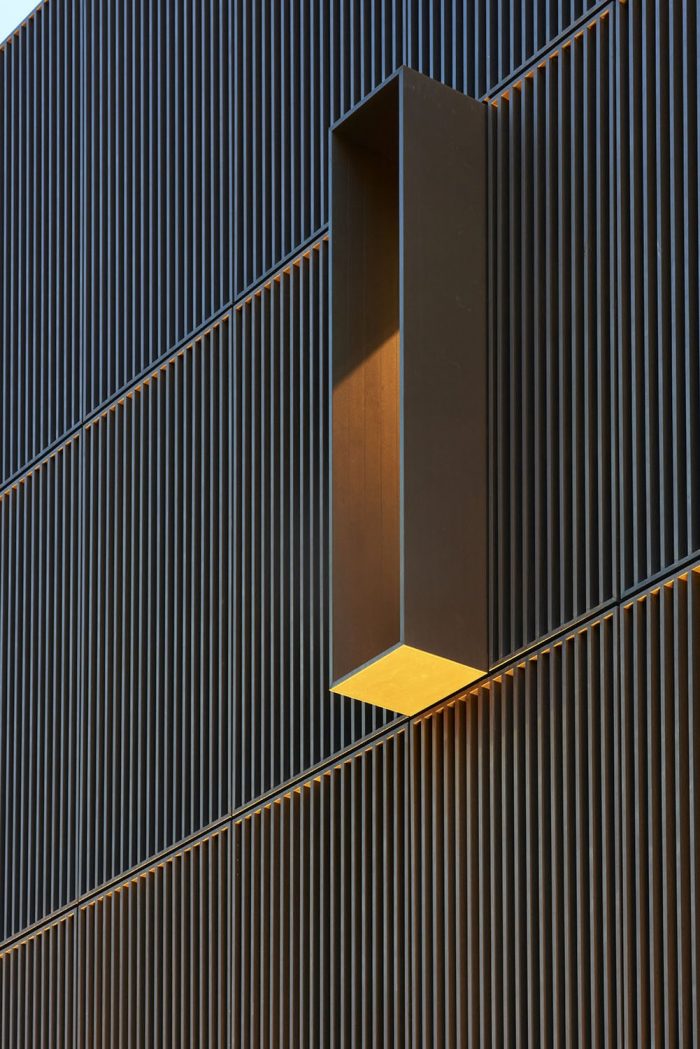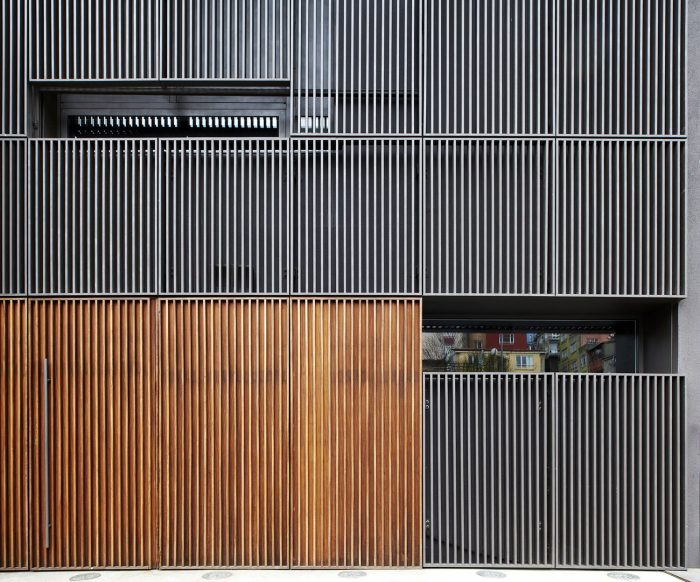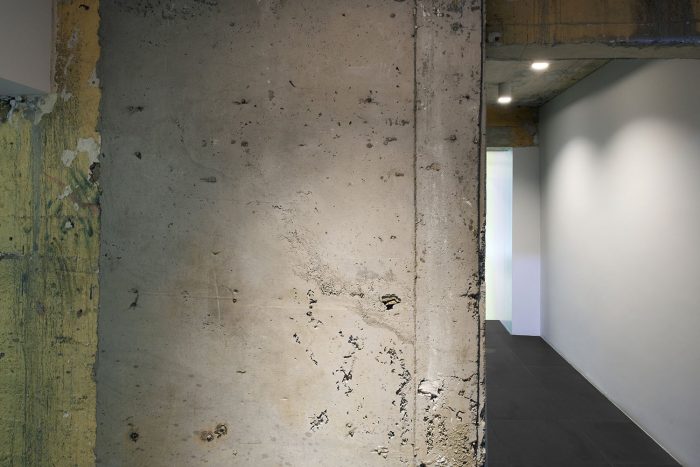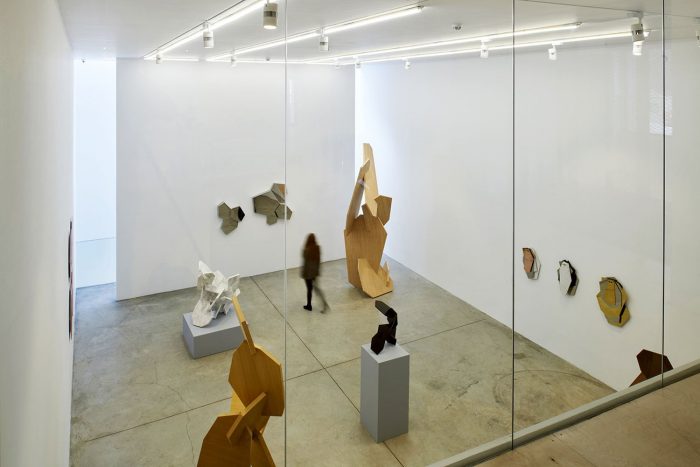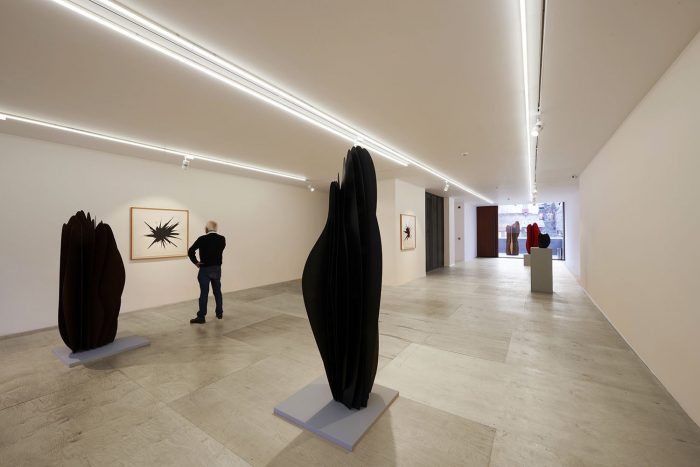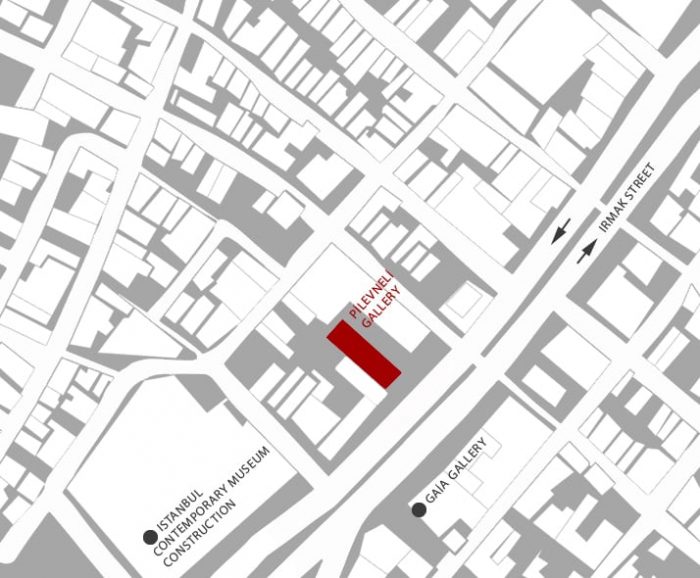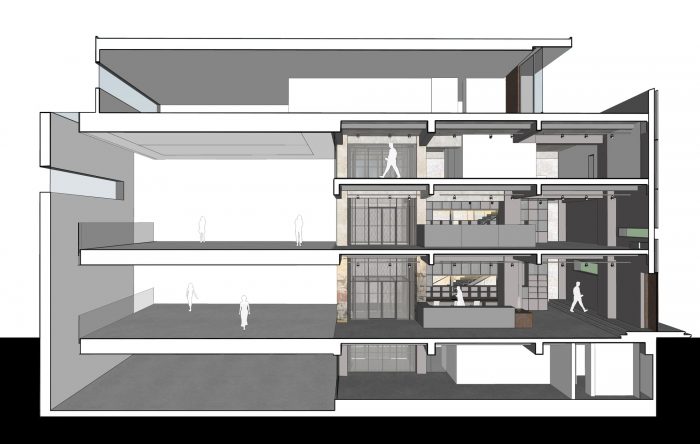Pilevneli画廊是一个适应性再利用的坚定例子,位于塔克西姆的Dolapdere区。该地区目前正在经历一场以艺术和文化为重点的城市转型。画廊位于主要街道上,它的结构以其特有的无烟煤垂直薄片的中性外墙和整齐的线性开口而引人注意。
Pilevneli Gallery is an assertive example of adaptive re-use located in Dolapdere, a district at Taksim. The area is currently undergoing an urban transformation focused on art and culture. The gallery is situated on the main street, its structure demands attention with its characteristic neutral facade of anthracite vertical lamella and neatly composed linear openings.
直到五年前,这个贫困但非常中心的街区以其机械和人体模型陈列室主导了商业场景。今天,我们见证了这个没有规划的、色彩斑斓的、忙碌的环境的转变,相对较小的建筑被更大的现代设计的酒店、画廊和博物馆所取代。我们的方法抵制了当前的消除趋势。我们更倾向于探索这种典型的Dolapdere建筑的乡土气息,并将我们偶然的遭遇作为机会记录下来,试图接近其本质。重叠的油漆涂层和粗糙的火砖墙面被最小化地修复,以创造干净而原始的表面,反映时间的痕迹。在被额外的钢梁加固后,怪诞的混凝土骨架被清理,保留了它的斜面性质。
Up until five years ago, this underprivileged yet very central neighborhood dominated the commercial scene with its mechanics and mannequin showrooms. Today, we are witnessing the transformation of this unplanned, colorful, hectic environment with relatively small-sized buildings being replaced by hotels, galleries, and museums of larger more modern designs. Our approach resisted the current trend of eradication. We preferred to explore the vernacular of this typical Dolapdere building and documented our serendipitous encounters as opportunities in an attempt to get closer to its essence. The patina of overlapped coatings of paint and rough firebrick walls were minimally repaired to create clean yet original surfaces that reflect the traces of time. After being strengthened by additional steel beams, the grotesque concrete skeleton is cleaned, preserving its oblique nature.
在保持这个地方的灵魂的同时,一个对比鲜明的干净利落的 “白色立方体 “被嵌入到结构的东北端,以呈现一个孤立的 “艺术体验”。通过应用阴影间隙和有棱有角的照明设计,强调了裸露的旧结构和附加的石膏白色展览表面之间的惊人对立。
While keeping the soul of the place intact, a contrastingly clean and sharp ‘white cube’ is embedded to the north-east end of the structure to present an isolated ‘experience of the arts’. The striking opposition in between the naked, old structure and the add-on plaster white exhibition surfaces is emphasized through the application of shadow gaps and angular lighting design.
通过这个孤立的白色立方体的中性包络,某些框架被切割出来,揭示了附近的特定场景。在这个相当隐蔽的画廊体验中,这些框架提供了与繁忙的外部的有意识的接触点。Pilevneli画廊在颂扬建筑和街区历史痕迹的同时,为国内和国际艺术家提供了1500平方米的当代画廊空间。
Through this isolated neutral envelope of the white cube, certain frames were cut out to reveal specific scenes from the neighborhood. Within this rather secluded gallery experience, these frames provided conscious contact points with the hectic exterior. While celebrating the traces of the building’s and the neighborhood’s history, Pilevneli Gallery provides 1500 sqm of contemporary gallery space for both national and international artists.
Architects: EAA – Emre Arolat Architecture
Area : 935 m²
Year : 2017
Photographs :Thomas Mayer
Manufacturers : SIMES, Jotun, Nurus, iGuzzini
Engineering : Viramer Engineering & Construction
Design Team : Zeynep Arolat, Dilşad Anıl, Deniz Kosemen
Clients : Pilevneli Gallery
Collaborators : Skec Architects
City : Istanbul
Country : Turkey

